QOTW: How Important Are Graphics to Games?
In this week's feature, GameSpot editors and Raven Software's Jake Simpson talk about good-looking graphics, eye candy, shapes and shadows, and how these all fit with gameplay.
This week, we're asking, "How important are graphics to games?" Joining us is special guest Jake Simpson of Raven Software. And we're asking for your insight on graphics too, so vote in our Instant Poll. If you'd like to express your opinion about the importance of graphics, eye candy, and games, please
And, as always, if you have a burning question about games or the game industry, please
First: Raven's Jake Simpson talks about eye candy and gameplay
Lead Programmer, Raven Software
Well, it does seem like a silly question at first glance, doesn't it? Everyone is saying, "Of course they are!" And you'd be right. But how important are they really in the gist of the whole gaming experience? Are they the be all and end all? Well, no, not really.
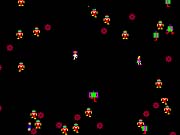
Wow, that's a big assertion, so let's back some of that up, shall we? There are those out there who will remember the days of Defender and Robotron. Or those who remember the Atari VCS. Now, the graphics in those days were crude, let's face it. In fact, we are being kind when we say crude. They were abysmal. But that's the technology we had in those days, and guess what--we still had fun. God knows that this golden oldie, Robotron, which barely has 16 colors in it, is still the game of choice-- even though I can now run around in a world in true 3D and do violence in real time with real-world textures. (Incidentally, it says a lot about how important graphical representations are when those so-called adult games were released for the Atari VCS so many years ago. Believe me, the graphics on the VCS were not up to the task, but people bought them and played them, squinting at the obscure blobs on the screen, trying to make out the vague naughty objects represented by eight very large pixels. This just goes to show that some people will buy anything and not care that the onscreen images look nothing like what they should!)
The basic argument here is that great gameplay will make up for so-so graphics, but great graphics won't make up for so-so gameplay--at least not for very long. A good example of this is an arcade game that Midway just produced, called Hyper Drive. It's one of the most gorgeous games I've seen in the Wipeout style. However, it just plain sucks to play. All the terrific pretty pictures in the world don't compensate for that.

Of course, the real nirvana is to produce gameplay and prettiness onscreen. That's why id with its Quake series and Epic with Unreal are enjoying such success. Their games deliver both. Incidentally, it's interesting to note all the industry going hog wild over the most recent Doom III video shown at the Tokyo Macworld Expo. Doom III certainly is the next generation in game visuals, with its correct hard and soft shadows, bump-mapped models, and so on, but let's make something clear. This was a demo that showed off what the new engine could do with a GeForce 3 card. We didn't see one second of any gameplay. While it is true to say that these kinds of graphics effects will help greatly when it comes to atmosphere, they really aren't any indication of how the game will play. I say this not to bash anyone, because God knows that demo just rocked the earth, but merely looking at it and saying "Oh my God, Doom III is going to be the greatest game ever" is a bit premature. I've no doubt it will be, but you can't use the video of great shadows as justification.
But back to the point. Good graphics will always help immersion in games. As games get more photo-realistic, games like Counter-Strike, as well as sports games and flight sims, will get more and more immersive and feel like the real thing, which is the goal, right? However, graphics don't make a game more fun. They just make you think it is.
I wonder what the world is going to make of the Tex Atomics' Battle Bots thing that Monolith and Real are due to drop on us any day now, with its heavy use of day-glow colors all over it. Hit or miss? You make the call.
Next: Good graphics attract--at first--says Trey
News Editor
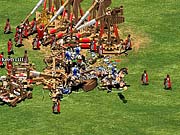
Despite all the attention graphics get, I think they are a less important game element. They definitely add to the gameplay experience when they are well produced, but considering my personal list of favorite games, none of them relies heavily on graphics. This may be a result of the genres I prefer, since strategy games and role-playing games require less graphic feedback than fast-paced action games or driving or flying simulations. For games such as Age of Empires II: Age of Kings have adequate graphics, but they are by no means a critical element.
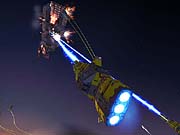
That said, I'm a sucker for flashy graphics. I must admit that I might not have given Sacrifice than I would be if those games' graphics were of a lower quality, and I'm glad that their game mechanics hold up well. And despite my conscious belief that graphics matter less than gameplay, value, and overall fun, I often subconsciously write off games that have low-quality graphics before I even have a chance to play them. If I later hear that those games are really great, I might give them a try, but my initial reaction is to pass them over.

For this reason, graphics play an important role in the initial appeal of a game and less of a role once a player has become familiar with the game. Maybe the reason I don't consider graphics to be an important part of my favorite games is that I've played those games so much that the graphics have blended into the overall game environment and have become just another part of the tool that lets me play the game.
Sometimes graphics can be an indication of the overall quality of a game. If a company spends enough time and money on a game to make it look good, one might assume it spent enough to make that game fun to play as well. Unfortunately, this is not always the case, and it is all the more disappointing to find out that some game you have been looking forward to playing isn't worth your money, despite all the great screenshots you saw before the game came out.
Next: Jennifer doubts all gamers prefer blondes
Features Editor
I once saw a movie called Gentlemen Prefer Blondes, which featured American icon Marilyn Monroe. Monroe's character, Lorelei Lee, is portrayed as a beautiful showgirl from Little Rock (read: a Podunk town) who has picked out a husband, and he just happens to be a big-city millionaire. The whole premise of the movie, insipid as it seems, is two single women's earnest reconciliation of love and marriage. In particular, lines delivered by Monroe stuck in my mind because they were intended as wisdom but also poked fun at our social values: "A man being rich is like a girl being pretty. You might not marry a girl just because she's pretty, but, my goodness, doesn't it help?" You could easily apply that reasoning to games.
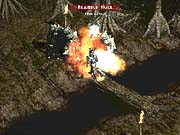
Graphics are very important--no doubt about it. But they're not more important than gameplay. In many ways, some of my favorite games of all time, especially the arcade machine games, might be considered ugly, which, in this industry, can mean anything that falls short of cutting-edge 3D graphics. For example, Diablo II. Many gamers were surprised by the game's low-resolution graphics; many of us were surprised as well because we had seen the game previously at various trade shows, where it had looked much, much better. However, after playing it for a bit and getting into the new character-building options, most players felt that the graphics were secondary to gameplay.

Another way to look at how important graphics are to games is to relativize them: Game developers have to make a firm decision about graphics fairly early in the conceptualization stage. And it depends on the audience they're trying to reach. Do different audiences have different standards of beauty by which they judge new games? It's hard not to generalize here, but some players tend to be much more forgiving about graphics quality than others, like action gamers. Then again, action gamers seem to have been spoiled by the popularity of the genre and by competitive developers who constantly seek to deliver a more visceral experience through more-graphic and more-realistic representations. Would these same players be impressed with The Longest Journey?
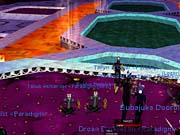
As with any discussion about abstract ideals, it's important to consider some of the limitations on gorgeous graphics. Most people would argue that PCs and video cards aren't a problem because systems are cheaper and faster today, but with regard to online gaming, bandwidth (or the lack of it, really) seems to be a big consideration in game design. I've heard a lot of comments about EverQuest, for example, and how its graphics don't compare to such and such game's graphics. However, EverQuest is a perfect example of a balance between pretty 3D graphics and technological constraints. Sure, the character models aren't realistic or extremely detailed, but the game allows for huge 3D environments that a hundred or more players can occupy. Add to that all the amazing real-time particle effects for spellcasting, and you've got quite a taxing gameworld. In this sense, graphics should fit both form and function, and perhaps that's a way to look at this question.
Next: Giancarlo wishes they could play as good as they look
Assistant Editor
If there's one debate that spans games, genres, and even platforms, it has to be the importance of visual quality in games. Though it seems to be a little more prevalent in console gaming circles because of the strong devotion to individual systems, PC gaming sees its fair share of conflicts among fans who accuse each other of overlooking poor gameplay because of a particular game's great looks, and conversely there are people who won't play a particular game because it just looks generally bad. Either way, the debate continues to rage on--it's fueled by the explosion of 3D acceleration and, most recently, by the announcement of Nvidia's GeForce 3.
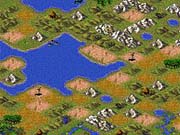
However, before the introduction of 3D acceleration, or at least before the explosion of three-dimensional games, graphics weren't as important, and it was fairly easy to look past a game's ugly exterior if it had solid gameplay. A perfect example of this is Civilization II. The first time that I played Civilization II was a time when developers were just starting to make use of polygons and when two-dimensional graphics were becoming much more detailed, so Civilization II's graphics were obviously not its main appeal. But I was able to look past its relatively simple look, and it turned out to be one of my favorite games, which I still play to this very day. Obviously, two-dimensional turn-based strategy games don't really require much flair since they're fairly restrictive gameplaywise, but as outdated as Civilization II looks, it's still a great game that continues to withstand the onslaught of 3D-accelerated games.
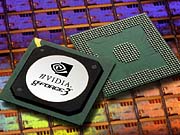
Once 3D graphics and 3D acceleration came onto the scene, the importance of graphics significantly increased for a number of reasons. Graphics became much more of an initial hook for a game thanks to new 3D cards, and if you bought a new video card, chances are you would want to own a game that makes use of it. A company developing a new game would say that its new engine uses all the new features supported by a specific graphics card, and as a result, there was nearly an instant buyer base for a game. Unfortunately, these selling strategies still exist to this day, showing that graphics play a much larger role than they did before. Just take one look at all the games that have surfaced in the past week--games that use features supported only by the GeForce 3. When someone pays $600 for a graphics card, he or she expects to have games that support it, and lo and behold, there are already a few games that claim to support the card's new features. As such, graphics quickly become the major selling point of a game. Of course, there are times when a game's gameplay matches the high-quality visuals, and thankfully, this seems to be happening much more often.

So, after all that, I would have to say that graphics are incredibly important because they serve as the initial hook for a game, which makes sense since most people look at screenshots of a game only until the game or a demo is released. As far as an actual game goes, graphics can help enhance a gaming experience tremendously--or they can make it unbearable. Clive Barker's Undying uses its visuals to make you really feel like you're in a haunted mansion, thus making the overall experience much more enjoyable. On the other hand, there are games in which the frame rate or overall visual quality is so bad that it completely ruins the experience. Graphics weren't always a high priority, but it seems that visuals have evolved into an element that can directly contribute to, or take away from, an experience much in the same way that gameplay does.
Next: Read Craig's theory of graphics relativity
Downloads and Media Editor
Gauging the importance of graphics in computer games seems like an easy, straightforward task. But it depends on varying situations and games or genres. While I can safely say that some of my purchasing decisions have been influenced by exceptional graphics, they aren't what kept me playing a game. In fact, several times I remark to myself, "Oh, that's nice" before I turn off high detail to gain speed. Ultimately, it comes down to how graphics make my gaming experience better.
I think Ultima VII was the first game in which I became aware of graphical differences between games. Perhaps this is because it was the first real computer game I owned. Before then, I played either Nintendo games or PC games on a Tandy 1000. Games on these systems pretty much looked the same to me, and all I was interested in was playing them. Most RPGs I had played before were fun but are fairly ugly when I look at them now. Ultima VII just wowed me with the detail it had in such a large world. It also made me wonder what "Voodoo" was when it explained graphical issues in the technical support section of the manual. This was back when I didn't know anything about hardware, and I wouldn't find the answer to that question for a few years. I think the subsequent time I became interested in graphics was when I started to become interested in playing Quake and in hardware. Personally, I am not wooed by all the lighting effects because I'm not very good at pointing them out; instead, I like to see greater details in a game.
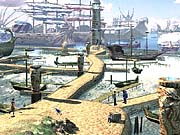
I think graphics are most important in RPGs and adventure games because they add to the gameworld that the storyline is trying to create. I don't want to see a bland world in something that's supposed to be a colorful or magical land. I can imagine a fantastic world when reading a book, so when I play a story-driven game, I expect to see something interesting. For example, take The Longest Journey: I played only a little bit of this game, but it's something that I could definitely spend time playing simply because of its looks. I wouldn't want to play that game if a green cone on top of a brown cylinder is what it called a tree.
Up until last year, I didn't think graphics were a big issue when deciding among strategy games. But games such as Earth 2150 have impressive weapon effects and environments. Bright lasers or rockets with acrid black smoke are amazing to watch over and over again. I like to fire at trees and watch them catch fire and fall over. Detailed graphics can also be useful in strategy games: In the Age of Empires II expansion, units leave footprints in the snow, which can be tracked by an opposing player. If I'm going to choose a new strategy game now, I would take a serious look at the one that has nicer graphics and details.
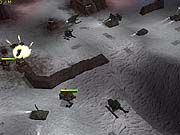
On the other hand, I find that graphics take a backseat in action games. I don't find that high detail is better than higher frame rates with my current hardware. And even if I were able to run games at high detail at 640x480 resolution, I'd rather go to 1024x768 with lower details. Competitive multiplayer games are just too dependent on frame rates and ping that no one really cares about graphics beyond a certain point. Players will remove rocket trails and gun models to see more frames.
I think new game series depend on graphics for driving their sales more than established ones do. Diablo II is a great example: It didn't look much different from the original, but thanks to its Diablo gameplay, people picked up the sequel without giving too much thought to graphics quality. Overall, I think graphics are nice to have, but unless graphics are needed to help drive the story, I would pick better gameplay over graphics any day.
Next: Can Greg be seduced by a pretty face?
Executive Editor
I used to be one of those guys who'd tell you that graphics aren't so important, but, honestly, ever since I got my new 1.1GHz Athlon machine with a GeForce2 GTS card, I've decided that good graphics can go a long way toward making me like a game. How predictable is that? The fact is, everyone is vulnerable to the charms of pretty graphics. I might hate playing a game, but if it looks good, I'll make myself play it. As for you, given the choice, you'd take good graphics over bad graphics any day of the week. I would also venture to say that, seeing that graphics in games are generally much better now than they used to be, it's becoming less and less acceptable for games not to look good. Even so, it's not acceptable now, nor will it ever be, for a game to simply look good and not be enjoyable to play.
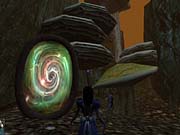
When I'm reviewing a game, one of the ways I consider how important its various elements are is to take them out of the equation and then think about how that game would have ended up. I think about whether I'd enjoy the game as much if it didn't look as good, if it didn't sound as good, if the story were less interesting, and so forth. The process of elimination lets me figure out exactly what it is about a game that's so great. Often, it's the graphics. There have been several games in the last couple of months that received mixed reviews largely because they were all visually impressive but otherwise a little inconsistent. These include American McGee's Alice, Giants: Citizen Kabuto, and now Clive Barker's Undying. Ultimately, I think all of these games deserve the mixed reviews they received, because they're not perfect; I think all these games look outstanding and ultimately deserved all the attention they got.

That's because graphics really are important in games. Like it or not, you'll notice the graphics in a game first and foremost every single time. That is to say, a game fundamentally can't be impressive if it doesn't have great graphics. You might really enjoy its gameplay, or its story, or its sound effects, but if it doesn't look good, then you might not even give it a chance. Let me rephrase that: Maybe you'd give it a chance, and some other gamer might not.
There's something to be said for appealing to the mainstream. In the games business, you either have a hit or you have a flop--there's not much middle ground. Games such as The Sims and RollerCoaster Tycoon bring in millions of dollars in sales for months and months, leaving a lot of great games to compete for space in the bargain bins. Actually, The Sims and RollerCoaster Tycoon are a perfect counterpoint to everything I've said up till now. These games don't look so remarkable. But they do have very clean, immediately recognizable presentations. Take one look at either game, and you have a great idea of what they're all about.
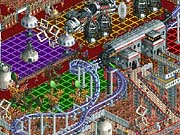
Maybe that's the key. I do think that for hard-core gamers, graphics are really important. Sure, even they say graphics aren't everything, but these days you can have your cake and eat it too. For certain types of games, like first-person shooters, it's equally important that they play well and that they look good. If an action game or a role-playing game merely look good, well, then, there's a better one available--one that looks as good as it plays.
It's past the time when you could get away with apologizing for the shortcomings in games. I don't think it's acceptable to say things like "Yeah, well, it doesn't look that good, but it's really addictive" or "It doesn't look that good, but the story is excellent." It's a highly competitive market now, and if designers expect players to pay $50 for their games, then they'd better commit to making their games presentable, fun, and a pleasure to listen to--and everything else.
Next: Sam judges pretty looks in games
Hardware Editor
Computer games are essentially a visual medium, so it's naturally important for games to be presented in graphically interesting ways. But it's important for a game's graphics to match its substance and enhance its overall experience. The rapid advances in game graphics are similar to how movie special effects have leapt forward in the last decade. Just as few people would enjoy a lengthy movie entirely consisting of special effects or technically skilled quick cuts, game graphics have to be more than just an extended tech demo. I think games will similarly mature as a medium so that state-of-the-art graphics increase a player's immersion in a gameworld instead of just making the visuals more entertaining or eye-catching.

Understandably, many equate great game graphics with technically impressive 3D engines. But games that push the envelope in the most influential ways are typically not only technically sound, but also use new engine features to the best possible effect. For instance, the use of dynamic lights and darkness was only one of Doom's innovations, but it's what I remember most because it gave me a real dread of what might hidden around the next corner. Raising the bar in graphical detail went along with a skillful use of the effect. It's easy to show off highly detailed environments or flashy special lighting effects to non-gamers to prove what an expensive new PC can do, but it's this attention to interactive detail that makes games more fun to play.
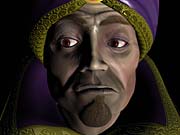
Some types of games can do without 3D graphics. Strategy and role-playing games can be just as effective using well-animated prerendered characters. The tactical combat in Shogun: Total War layers animated 2D sprites on top of 3D terrain simply because it'd otherwise be impossible for mainstream PCs to handle battles with thousands of individual troops. This approach put the 3D resources where they counted, rendering picturesque Japanese hills and valleys that had a real impact on the outcome of a battle. Since the artists on development teams generally have the most control over 2D graphics, it's not uncommon for prerendered art to be the most interesting and stylized. For example,
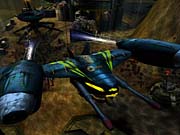
That's not to say that there aren't promising developments ahead for extending 3D graphics in increasingly interactive ways, but a big hurdle is PC hardware itself. I'm hopeful that developers will really get behind the new DirectX 8 special effects for next-generation graphics chips, which we've looked at in some detail in a recent
Next: Readers remember why their favorite strategy games were so great
Reader Letters
What makes your favorite strategy game great?
Without a doubt, Combat Mission: Beyond Overlord is my favorite strategy game. Made by an independent game company located in Maine (I think), this game is only available through online purchase. Basically, it is a World War II combat simulator, where you can play in single-player or multiplayer mode via TCP/IP or e-mail. Turn-based and amazingly accurate, this game can educate those who play it about what "real" strategy involves, not just "who has the fastest system" or "who clicks the fastest."
--Sean Latham
I have to say that I will probably play Civilization II until you have to pry the mouse from my cold, dead fingers if--and only if--Civilization III and subsequent releases don't improve upon it. It has been my favorite game since its release nearly six years ago, and nothing since has come close. What makes it so great? Well, a combination of things.
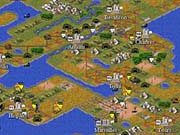
First and foremost, the complexity. Games like this with 100-plus page manuals are what I want on my PC. If I wanted shoot-'em-ups, I'd buy a dedicated gaming platform. I want a thinking game that taxes my brain and makes me weigh all sorts of variables. Will my current government support a large enough military to allow me to fight a war with my rival? Should I declare war on my best trading partner after catching one of its spies in the act? Should my infrastructure focus on agriculture and growth or manufacturing and resource production? Should I choose to research the technology that gives me more military, commerce, or education benefits in the short term, or should I take the path that gives me nothing immediately but is a prerequisite for a prime technology down the road?
Secondly, diplomacy. Every nation needs allies and friends to establish relationships with and set up some sort of quid pro quo. That's how the real world works. Working with allies toward a common goal; establishing deals involving technology, money, and/or military units; and avoiding entangling alliances that will drag your nation into an ill-advised war establish the fact that yours is not the only nation vying for victory. Especially in a single-player game, the player needs to feel that he or she is not alone fighting one faceless, collective enemy, but conspiring and dealing with myriad personalities with individual agendas who want the lion's share for their own people.
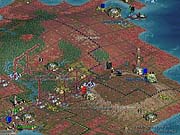
Thirdly, historical relevance. Alpha Centauri was a good game and improved upon the Civilization II engine in many ways, but being set in the future on some mystical planet did not immerse me in the grand scope of human history that Civ II does. Vying with Alexander the Great's Greeks for control of a resource-rich peninsula with phalanxes, catapults, and triremes is much more captivating for me than dueling with some leader of the theocratic sect with laser dunebuggies and hovertanks--the "proper" names of which have all escaped me. The ebb and flow of history and empire and the deep-running undercurrent of nationalism came alive for me in Civilization II.
Finally, AI. If the game meets the first requirement for me (complexity), it's going to require too much time and thought for me to spend in multiplayer sessions effectively. Trying to find a group of gamers with enough free time to finish a game in anything less than a year is nearly impossible in games of this nature. And there's always the one guy who spends five times as long as anyone else analyzing and micromanaging his empire to the nth degree, dragging the game down for everyone else. The AI must be good enough to present a consistent challenge to the single player--and without cheating preferably!
Civ II is not as strong in diplomacy and in AI as it could be, but it still, on average, totals higher in all four categories compared to any other game I've encountered since its release. Improving the diplomatic options and AI of Civ II alone would be enough for me to buy Civ III. Better graphics and sound and a more complex combat system would be welcome additions, but gameplay following the four points I've outlined is the true core of the game that keeps bringing me back for more even after six years.
--Dar Steckelberg
Next: More reader letters
Reader Letters
What makes your favorite strategy game great?
Well, I would place my RTS vote for the original Command & Conquer; it set the basic standard for RTS game interfaces, and it actually had two sides that were different from each other. It had decent mission variety, pretty good graphics, great music, and great inter-mission cutscenes. What set it apart from a great deal of recent games, such as Age of Empires II: The Age of Kings, was that the two sides had very different technologies, especially at the end. The dozen sides in Age of Empires II and Age of Wonders aren't that different from each other. In Age of Wonders, for example, the sides almost have exactly the same units with different names and graphics.
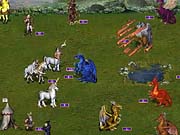
My turn-based vote goes to Heroes of Might and Magic III. A game that can steal many hundreds of hours from you has to be doing something right. This is a game that has nine totally distinct sides, and somehow they all balance out and make the game completely different each time you play. There are so many different strategies that you can use, and you need different ones for each map, each opponent, and each battle. Heroes of Might and Magic III accomplishes all of this without the complexity that comes from a typical turn-based strategy game, or (God help us) a wargame. Someone with no experience can sit down and learn to play Heroes in five minutes, but it takes hundreds of hours to get your strategies just right, even for one or two hero classes. Heroes I was great; Heroes II was incredible; and Heroes III is simply awe inspiring--a level that more developers should strive to attain. I can't even imagine what Heroes IV will have in store.
--Travis M. Spomer
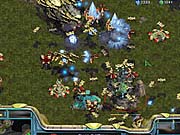
A great strategy game has to be fun, and to be fun I think it has to be balanced. Starcraft is a perfect example of this, though Age of Kings also works quite well. There is no real best race or real civilization, which means that many different strategies will emerge, just like in real life.
Like a general, you must pick a strategy and execute it. This extends to multiplayer primarily, but strategy games are also a great medium for single-player action, because colossal conflicts often have colossal plots. But it always has to be possible to win, always playable, always fair and balanced.
--Dzleprechaun
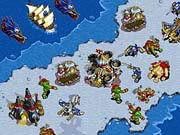
I've never played Warcraft I; Warcraft II was the first RTS I encountered, and sweet is the memory of those quests through frozen winter forests seeking the dreaded orc grunts. Warcraft II had all a great RTS game requires; it gave the fascinating power to start from scratch and make yourself alive in a fantasy world. The second game that gave me the same feeling was Age of Empires. What I liked about it was its more-realistic graphics, its isometric perspective instead of a top-down one, and the lifelike unit sprites. I remember my first installation of the game: There were some cavalry units riding on the top and the bottom of the installation panel, and I sad to myself, "Fancy animations, but let's see the real units of the game!" And those were real units from the game! That was an extremely pleasant surprise, and I think that's one of the few really important things a great game has to offer.
And here we have Blizzard's Starcraft, which is the best RTS ever made in my opinion. In spite of the low resolution, the graphics served well, and it's an incredible game to play. Because of the totally different three factions, you had actually seven games in one: You could play Terran vs. Terran, Terran vs. Protoss, Terran vs. Zerg, and so on, all requiring different strategies.
--Alex
Question of the Week Archive »
Got a news tip or want to contact us directly? Email news@gamespot.com
Join the conversation